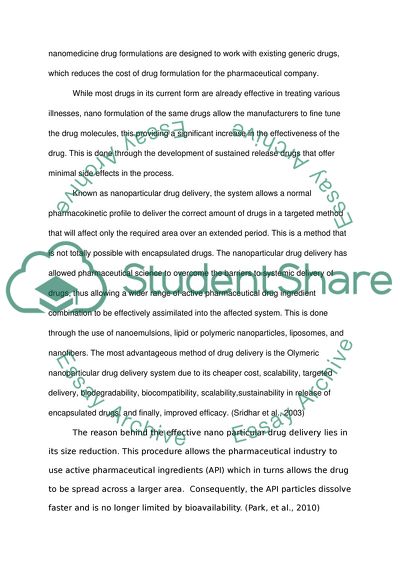Cite this document
(“Azithromycin loaded polyethylene sebacate nanoparticles preparation, Essay”, n.d.)
Azithromycin loaded polyethylene sebacate nanoparticles preparation, Essay. Retrieved from https://studentshare.org/miscellaneous/1655360-azithromycin-loaded-polyethylene-sebacate-nanoparticles-preparation-pharmacokinetic-and-efficacy-in-pneumonia-of-rabbits
Azithromycin loaded polyethylene sebacate nanoparticles preparation, Essay. Retrieved from https://studentshare.org/miscellaneous/1655360-azithromycin-loaded-polyethylene-sebacate-nanoparticles-preparation-pharmacokinetic-and-efficacy-in-pneumonia-of-rabbits
(Azithromycin Loaded Polyethylene Sebacate Nanoparticles Preparation, Essay)
Azithromycin Loaded Polyethylene Sebacate Nanoparticles Preparation, Essay. https://studentshare.org/miscellaneous/1655360-azithromycin-loaded-polyethylene-sebacate-nanoparticles-preparation-pharmacokinetic-and-efficacy-in-pneumonia-of-rabbits.
Azithromycin Loaded Polyethylene Sebacate Nanoparticles Preparation, Essay. https://studentshare.org/miscellaneous/1655360-azithromycin-loaded-polyethylene-sebacate-nanoparticles-preparation-pharmacokinetic-and-efficacy-in-pneumonia-of-rabbits.
“Azithromycin Loaded Polyethylene Sebacate Nanoparticles Preparation, Essay”, n.d. https://studentshare.org/miscellaneous/1655360-azithromycin-loaded-polyethylene-sebacate-nanoparticles-preparation-pharmacokinetic-and-efficacy-in-pneumonia-of-rabbits.


